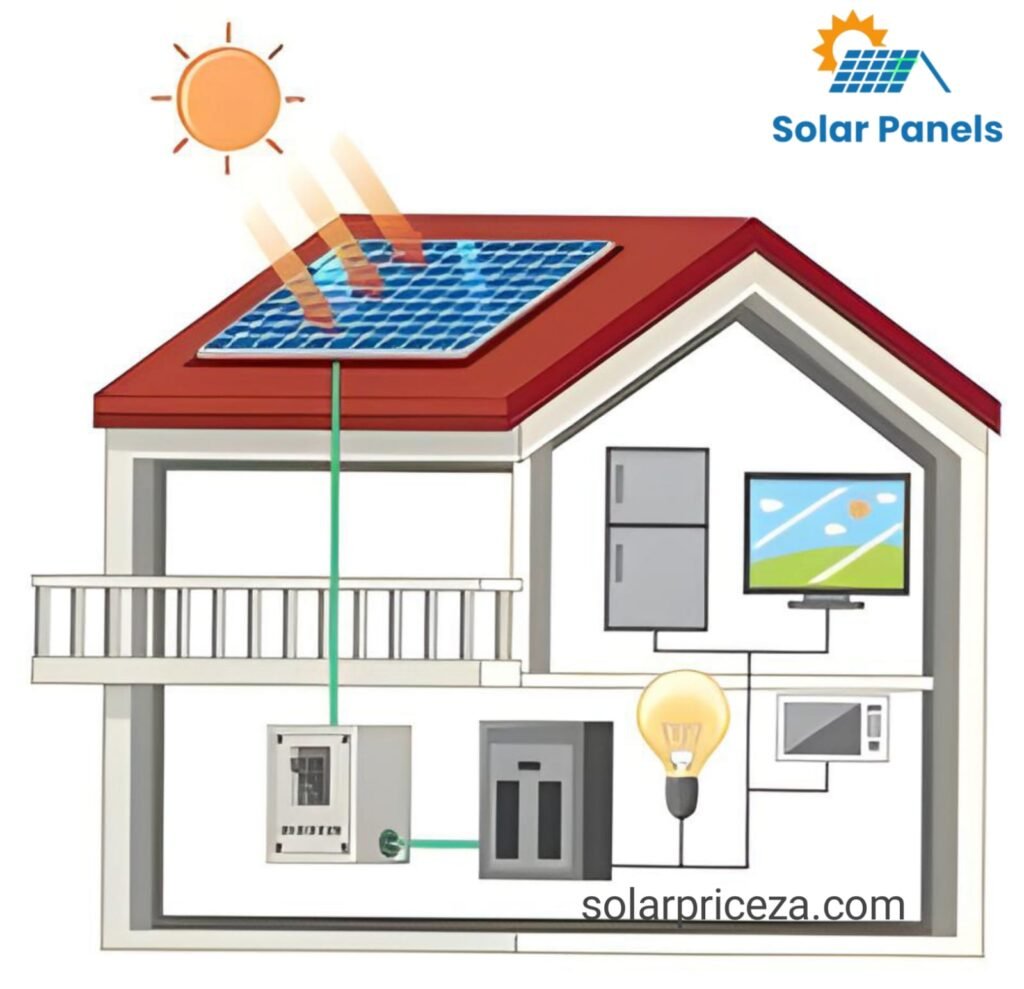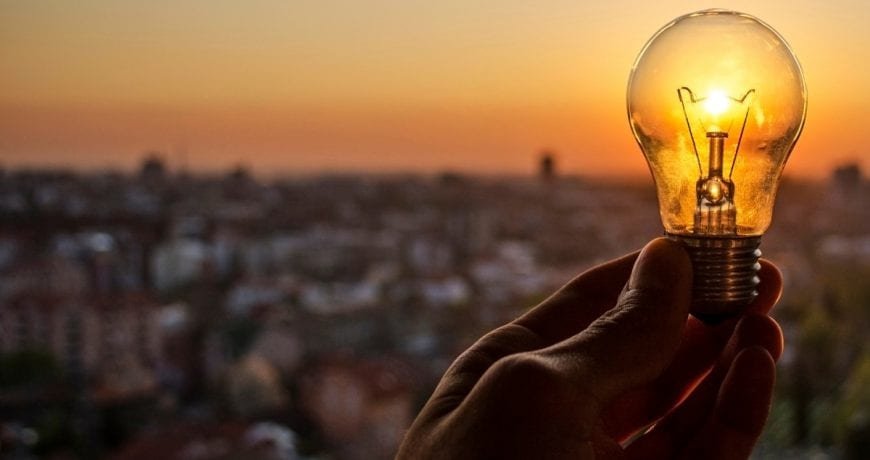Home solar systems in South Africa:
more will be installed if households are given loans, free maintenance, and security.
The goal of Home solar systems in South Africa is to use more solar photovoltaic electricity. However, everything is moving extremely slowly.
Despite the bright climate, which is ideal for solar photovoltaic energy generation, fewer than 5% of the nation’s energy comes from solar photovoltaic sources. Although data indicates a strong uptake in the last three years, with a 349% rise in rooftop solar PV capacity from 983 MW in March 2022 to 4412 MW in June 2023, less than 10% of homes have started utilizing solar photovoltaic power regularly so far.

It is imperative that South Africa rectify this. It is heavily reliant on coal-fired power plants; fossil fuels account for 85% of the country’s electricity. Furthermore, it has had increasingly severe power outages for the past ten years. The pressure might be relieved if solar electricity becomes widely used.
To make things better, the government has taken action. In 2022, the 10-point energy plan was released, which loosened the regulations related to private power generation. In addition, the government announced tax breaks for solar panel installations that will take effect in March 2023.
We carried out an overview to investigate the obstacles to household solar usage in South Africa as environmental scientists who specialize in sustainable energy and household energy use.
The main issues we identified were divided into five categories: institutional, societal, financial, personal, and technological challenges.
Financial barriers:
According to our study, the primary reason why many families had not switched to solar photovoltaic electricity was financial hurdles.
Low-income people are being severely impacted by electricity price rises that are intended to support the state-owned electrical firm Eskom. But for this group of South Africans, going solar is too costly. In South Africa, homeowners can receive a refund of up to 25% of the cost of new solar panels, with a cap of R15,000 (about $826) per property. Start-up and maintenance expenses can be very significant in the absence of upfront financial support.
Because they lack assets to serve as security, low-income people are unable to obtain solar loans. Similar obstacles have also been documented in poor nations like Uganda, Nigeria, Pakistan, and others where people find it difficult to switch to solar energy due to its high initial price.
Personal barriers:
The low home use of solar photovoltaics is partly due to personal hurdles. We discovered several instances:
an ignorance. There is not much information on solar photovoltaics. For instance, some homes in social housing were given solar water heaters but were not given any instructions on how to operate them. They eventually broke down, which deterred other individuals from installing solar geysers and created disappointment and frustration.
A poor impression of solar photovoltaic energy. It was viewed by some homes as a poor source of energy that couldn’t cover all of their needs.
Institutional barriers:
Our research found that municipalities and Eskom did not really support solar photovoltaic adoption because they make money from selling coal-powered electricity. When people switch to solar photovoltaic energy, Eskom and municipalities lose income. For example, researchers found that Stellenbosch municipality would lose up to 2.4% of its revenue per year if households switched to solar energy.
The lack of robust and well-defined renewable energy policies in South Africa is another institutional hurdle. For instance, the government began offering solar-powered residential systems in 1999 in exchange for a very nominal monthly maintenance charge. However, the lack of explicit policies to direct the systems’ distribution resulted in corruption, which is why this initiative failed.
Technical barriers:
In our analysis, important technical challenges included machine damage, difficulties sourcing spare parts, and a lack of maintenance services.
Some solar household systems supplied through government programs failed due to damage from use. Finding replacement parts was costly and time-consuming because they had to be purchased from abroad.
Similar issues have been reported in other African countries, including Guinea and Nigeria. Unlike rich nations, where spare parts are more easily obtained, emerging countries frequently struggle due to a lack of local manufacturing.
Social barriers:
Social barriers, such as theft, were among the reasons why households were unwilling to switch to solar photovoltaic electricity. For example, theft of solar panels and equipment was popular during the Solar Home System Electrification Program pilot project in the rural Folowoodwe village and Wimbe district of South Africa’s northern province of Limpopo. Residents claimed that this occurred because it was easy for them to steal. That is why residents in these areas were hesitant to invest in solar energy.
Next Step:
The first step: The first step would be for the government to provide solar loans, power purchase agreements, subsidies, and refunds. In the Seychelles, one of only four African countries where all homes have access to power, interest-free financing for solar geysers has previously been available.
The second step: The second step is to educate people about the benefits of solar photovoltaic systems. This can occur at community meetings, on social media, or in the school syllabus. Solar photovoltaic firms must also ensure that individuals receive solar systems that are suitable for their needs and that they are provided with relevant information before installation.
The third step: The third step is for companies selling rooftop solar to provide continuing support and care to their clients. South Africa should also invest in expanding its solar photovoltaic industry and training additional technicians.
Conclusion:
To summarize, the use of Home solar systems in South Africa can be considerably increased by creating a comprehensive support system that includes cheap loans, free maintenance services, and security measures. Households can avoid the initial expenses of solar installations by resolving their financial problems through loans. Furthermore, providing free maintenance maintains the longevity and efficiency of these systems, which encourages use. Additionally, integrating security measures can reduce concerns about criminal activity and theft, increasing homeowner confidence. More homes can adopt solar energy thanks to these plans, which contribute to South Africa’s sustainable development, energy independence, and environmental preservation.
FAQ’s:
How can South African homes afford solar systems?
To make solar systems less costly, homeowners can take advantage of loans designed expressly for solar installations. These loans often provide beneficial conditions and repayment choices, allowing homeowners to cover the initial upfront costs. Home solar systems in South Africa:
What are the benefits of free maintenance for solar systems?
Free maintenance ensures that solar systems run at maximum efficiency, increasing energy generation and increasing their lifespan. This feature not only saves households money on repairs and maintenance, but it also provides regular and dependable energy output.
How can security concerns be addressed for home solar systems?
Implementing security measures such as safe installation, CCTV cameras, and neighborhood watch programs can help deter criminal activity and damage to solar equipment. In addition, solar installation-specific insurance might give financial protection in the event of an incident.


